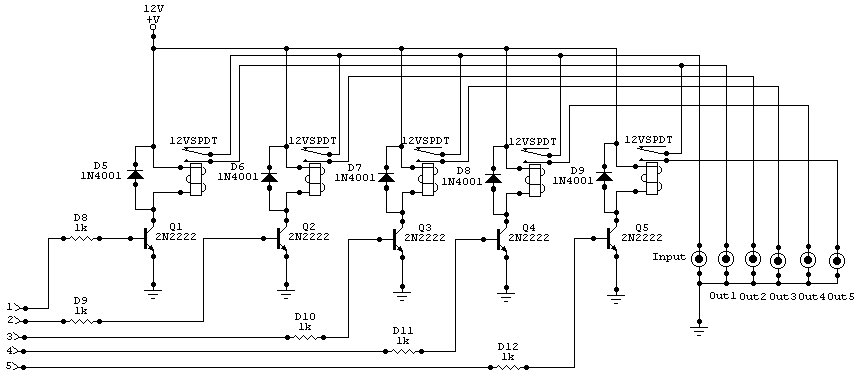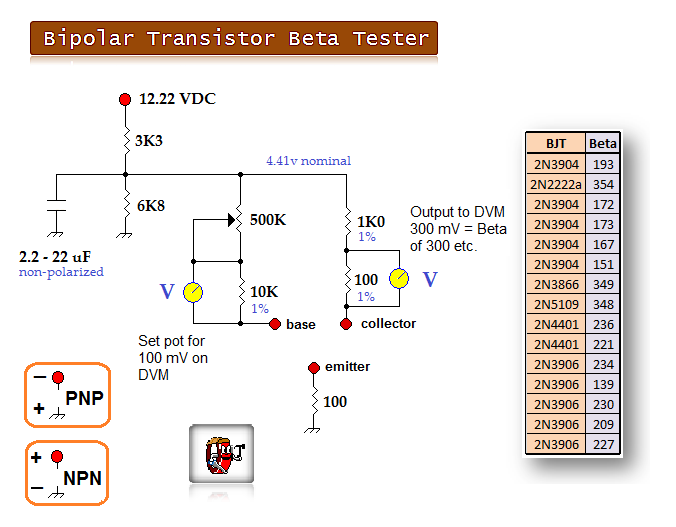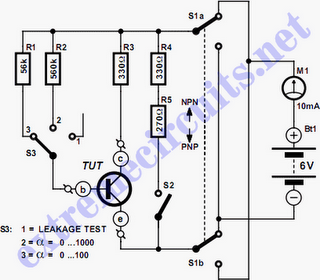
In the final circuit (Fig.2) cancellation of the voltage drops introduced by diodes D1 to D4 is achieved by supplying power to their junction via R5 when the transistor/diode switch is in the diode position. The original circuit before the introduction of the diodes is satisfactory for testing diodes and thyristors with their forward voltage drops of 0.5V to 1V or so. The reduced voltage available also means that the tester is less affected by in-circuit resistance - in fact it will tolerate values as low as 50 ohms before any dunning of the LEDs occurs. This is about 0.4V, which is insufficient to cause a diode connected across the terminals to conduct. The voltage appearing across the collector/emitter terminals is the forward voltage drop across the LED minus that of the two diodes. Fig.1(d) shows the set-up for testing an NPN transistor. Also, if there is a low value resistance across the transistor being tested, sufficient current may pass through it to cause both LEDs to turn off, giving an incorrect short-circuit indication.ĭiodes are added to the circuit to overcome these drawbacks. This would give an erroneous indication of a good transistor. For example, if the transistor being tested has a base-emitter or base-collector short-circuit it will act as a diode, conducting on one half cycle and thus extinguishing one LED.


This basic circuit suffers from certain limitations. Both LEDs will continue to flash if the transistor is open-circuit, and both will be off if it is short-circuit. The LEDs are thus labelled as shown, so that the LED which continues to flash indicates the type of transistor connected. With a good PNP transistor, LED1 is extinguished and LED2 continues to flash. If a good NPN transistor is connected, it will conduct on the positive-going half cycles, diverting current from LED2 only LED1 is left flashing. As it stands, the two LEDs will blink alternately as the supply reverses. The supply line is reversed at about 5Hz,Īnd two LEDs are connected back to back. Since it is undesirable to have to operate an NPN / PNP switch on an in-circuit tester, the circuit shown in Fig.1 (c) was adopted. Reversal of the supply line and of the LED is required in order to test both types.

1 (b) shows the equivalent test for a PNP transistor. 1 (a) shows the arrangement for checking an NPN transistor, while Fig. The basic principle of the unit is that the device being tested is turned on by a bias from the tester, thereby diverting current from an LED which is thus extinguished. In addition to transistors, the tester described here also checks diodes and thyristors. Musson, who built the unit some time ago and found it extremely useful. It was brought to my attention by B.A.E.C. The following article was published in the June 1983 issue of "Television", and is reprinted here by kind permission of the Editor, John Reddihough.


 0 kommentar(er)
0 kommentar(er)
